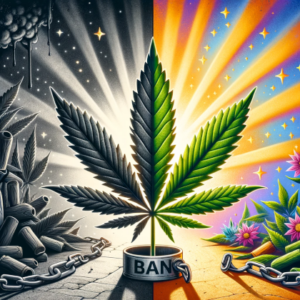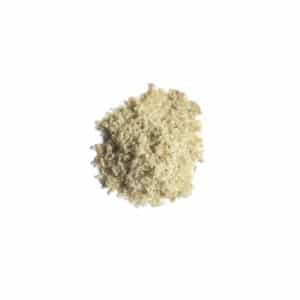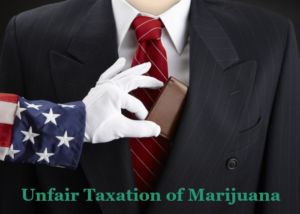

Cannabis Topicals: What’s Difference Between Lotions, Creams, Ointments, and Balms?
- Cannabis-infused topicals come in a wide array of formulas
- Each type of cannabis topical is formulated for specific uses
- Topicals often contain additional active ingredients specific to their use
- Skin creams, lotions, ointments, and balms can all be infused with cannabinoids
What are cannabis topicals? What are they used for? And what’s the difference between a cannabis-infused skin cream, lotion, ointment, and balm? In this post we’re going to explain cannabis topicals in plain and simple language.
Marijuana has earned a reputation for its indisputable anti-inflammatory qualities. The healing herb is now regularly employed by countless millions of medical marijuana doctors and their patients worldwide seeking relief from a wide array of medical conditions.
At present, a whopping 75 percent of American citizens recognize cannabis as an effective treatment for conditions related to muscle, skin, and bones. Many studies now back this belief.
The science behind cannabinoids has been progressing rapidly and steadily over the past few years. The delivery systems are also much improved. The industry is ramping up and medical marijuana dispensaries are becoming more prevalent across the U.S. Furthermore, today, anyone can buy CBD topicals online as long as they are derived from hemp.
Medical marijuana patients are no longer limited to smoking joints and eating pot brownies. Cannabinoids are now infused into a vast array of products. Today, patients suffering from skin conditions, sore muscles, and aching joints have their choice of a myriad of cannabis-infused topical lotions, creams, ointments, and balms.
Cannabis-infused topicals are revolutionizing long-held perceptions about the controversial herb while gaining popularity for their efficacy, safety, and accessibility.

How cannabis topical work
Endocannabinoids are molecules that are created naturally by our bodies. A category of cannabinoids known as phytocannabinoids is produced in cannabis. Both types of cannabinoids are like little keys that unlock innate healing abilities in our cells.
Cannabinoids regulate a wide array of physiological functions including inflammatory response and pain response.
THC binds with receptors in brain cells and causes a cascade of effects including increased dopamine production resulting in feelings of euphoria. THC is also a powerful pain reliever. CBD also offers anti-inflammatory and pain-relieving effects without the high that comes with THC.
Cannabinoids are also known to be very powerful antioxidants. Antioxidants are molecules that latch onto harmful molecules called free radicals that can damage cells. Damaged skin cells are responsible for conditions of the skin including cancer.
Cannabis topicals are unique in that they do not have to be processed through the digestive tract or lungs to do their job. As such, cannabis topicals are generally used for the purpose of relieving skin conditions such as itching, rashes, dermatitis, and psoriasis, as well as joint and muscle pain. They are also used to maintain healthy skin.
In addition to having effects on the skin, muscles, and joints, some of the cannabinoids in topicals are absorbed into the bloodstream where they produce systemic effects such as relieving anxiety and pain.
Different types of cannabis topicals
Most topical applications contain more than just phytocannabinoids such as THC, CBD, CBG, or others. Many are formulated for a specific purpose. Ingredients such as menthol, camphor, aloe vera gel, tea tree oil, cayenne, wintergreen, clove, and vitamin E are all used in various topicals for different reasons.
Some topical products attempt to harness the healing effects of particular strains of marijuana or hemp that contain specific cannabinoids and terpenes known for their pain-relieving properties. These products are made with full-spectrum cannabis extracts. Specific terpenes can also be added to cannabis-infused topicals to create what are known as broad-spectrum products.
Cannabis topicals for skin conditions
Cannabinoids have been shown to be beneficial for some patients suffering from dry skin, rashes, psoriasis, eczema, and several other skin-related conditions. The American Academy of Dermatology Association (AAD) announced in 2018 that topical application cannabis products show promise for skin diseases.
Cannabis topicals formulated for skin conditions often contain other beneficial ingredients such as aloe vera gel and vitamin E.
Cannabis topicals for joint and muscle pain
Some cannabis-infused topicals are formulated specifically to penetrate the skin in order to provide local relief to sore muscles and joints. These symptoms can be the result of a strenuous workout, injury, arthritis, and fibromyalgia.
Ingredients such as menthol aid circulation helping cannabinoids to penetrate the skin. Tea tree oil and camphor are old standbys for the treatment of musculoskeletal pain.
In a 2016 study, researchers showed that “topical CBD application has therapeutic potential for relief of arthritis pain-related behaviors and inflammation without evident side-effects.”
And a 2011 study published in the Journal of Pain Research reported that cannabis topicals are effective for both acute and chronic pain.
Cannabis topicals for healthy skin
Some cannabis topicals are not specifically formated to treat a disease or injury, but rather to simply maintain healthy skin. These often contain ingredients such as vitamins, minerals, and herbs known to help to keep skin soft and supple.
Many cannabis-infused lotions contain antioxidants to prevent oxidative damage to the skin and possibly fend off skin cancer. Some are formulated with sunscreen ingredients to prevent damage from UV rays.
Cannabis Lotions vs. Creams vs. Ointments vs. Balms
In addition to containing particular active ingredients, different cannabis topicals are also formulated with specific carriers. Some are water-based and some are oil-based.
- Cannabis lotions are generally water-based and thinner than creams, ointments, and balms. Lotions are specifically made for spreading over a large area of skin without leaving the patient feeling all oily or greasy. Lotions are also generally low-dosage and thus better for maintenance of healthy skin, and not ideal for conditions like rashes and psoriasis.
- Cannabis creams are thicker than lotions and can deliver higher dosages of cannabinoids to the area to which they are applied. Creams are made with either water or oil base and ideal for ailments of the skin as well as muscle and joint paint. Which conditions a product will treat depends on the other ingredients in the formula.
- Cannabis ointments are generally made with a petroleum or vegetable oil base. They are not intended for use over wide areas of skin but rather for applying to small patches of heavily inflamed skin such as a rash or patch of psoriasis.
- Cannabis balms tend to be waxier than the other types of topicals. Balms can deliver low or high doses of cannabinoids and other beneficial ingredients to severely dry skin such as chapped lips and to thick skin such as heels, knees, elbows, etc.
Conclusion
Cannabis topicals are designed specifically for use on the skin. Topicals come in a wide array of formulations developed for specific uses. Topicals can be thinner like lotions and creams for covering larger areas of skin, joints, and muscles. Ointments and balms, on the other hand, are generally much thicker and can deliver higher doses of cannabinoids to smaller areas with more severe symptoms.
Cannabis topicals containing THC may only be purchased at state-licensed marijuana dispensaries. However, anyone can buy CBD topicals online.






